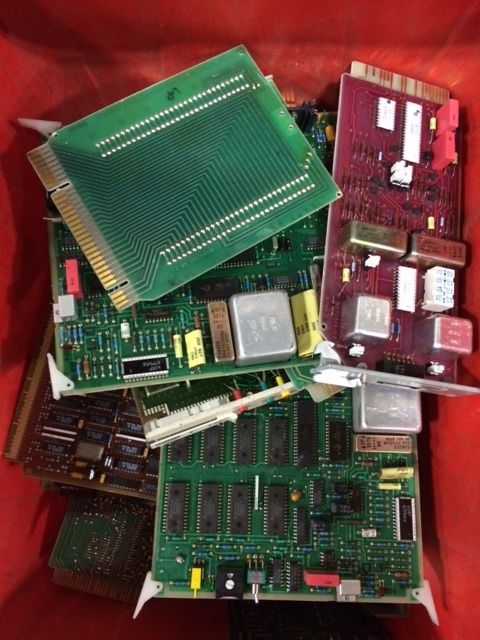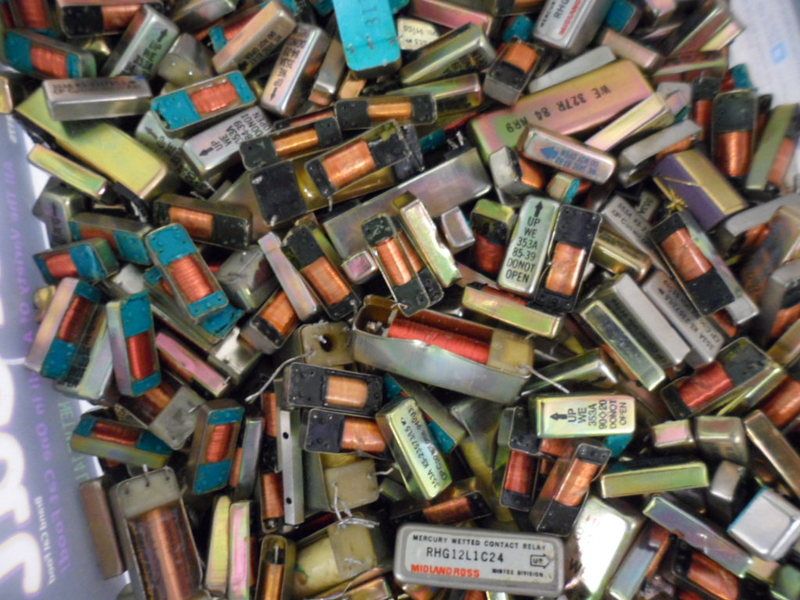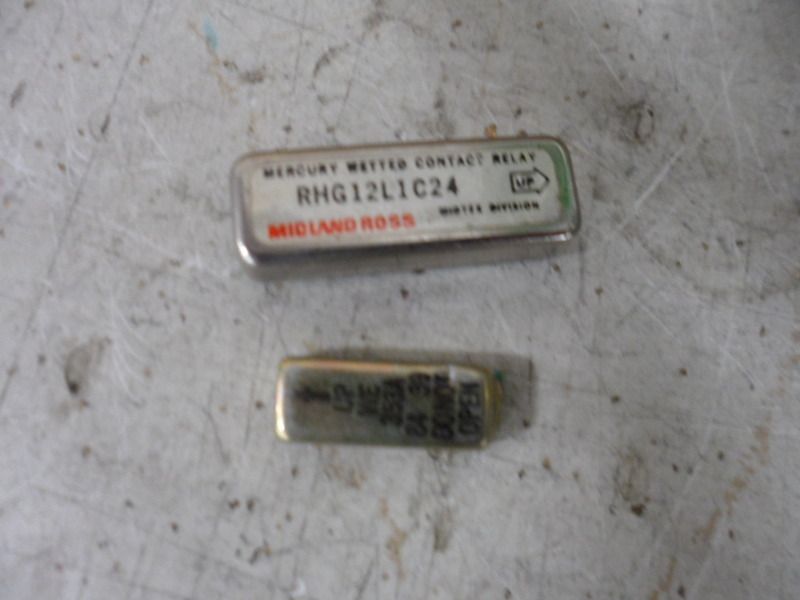I have found Mercury relays in Heating equipment thermostats, this was the unit that was screwed to the outside wall of a community Hall. (So it was old and semi industrial setting).
In the electrical cabinets of some industrial equipment. I have no idea what it controlled, maybe a furnace or something.
In the on/off switch of a portable Hospital vacuum pump.
You may also find them in the AC/DC ( \m/,) rectifier in vintage valve radios and amplifiers.
Google image these parts and switches to see what they look like.
The main reason why they use Mercury in switches is because there's no arcing at the contact face, so that means there's no sparks to inginite any flammable fumes in the air (such as the hospital).
The hall thermostat was a bimetal 'tipping' action, once the metal strip moved the glass vial so far, the Mercury ran from one end of the tube to the other and made a electrical contact across the two contacts, turning whatever it was, On.
(Same sort of 'tipping action' in the hospital vacuum pump too)
The rectifier.... These are real neat, a double W shaped glass globe with Mercury in the base.
Wiki it see one. And find out how they work, amazing. The ones in valve radios are small eggcup size.
But the same system, as large as a fridge, turns the AC electricity from huge hydro power stations into DC power, for long distance and under sea cable transmission.
The main thing with these Mercury relays/switches, is that they are inside a Glass tube with Copper wires going into it. You can see the Mercury inside it.
Also, while it does feel good to shake the vial and feel the Mercury slosh around inside it....
Don't.!
Mercurys pretty heavy and can break the end out of the glass tube..
The relay you pictured above is the sort you will find quite often while scrapping metal.
That ones got Silver/Copper contacts in it.
If there's Three contacts in it, often the centre one is solid Silver. (Actually its got Cadmium in it as well, its poisonous to inhale, so don't melt it down)
Most of the time the Silver is a button melted to the Copper backing, so its worth a little amount of money.
Cheaper contacts have only a thin electroplated face of Silver.
Though some contacts are Gold plated Silver or even solid Gold. You find these in slim and small relays, mostly the sorts that are 'onboard' circuit boards and such. Sometimes open air contacts in CD drive units, double tapedeck units, floppy drive units.
European dishwashers and driers like to have Gold plated contacts in their switches too.
I have found that others will have good Silver contacts in their switches, and dryer motors (NZ anyway) have huge solid Silver contacts on/inside the motors.
Last thing (thank God for auto update..) You may find 'reed switches', they are a thin glass tube with a wire out each end and two thin metal strips inside the glass tube. (No Mercury inside it)
Google image it.
Sometimes they are inside a plastic rectanglular block on a circuit board with a small Copper wire coil around it, encased in epoxy.
I get the impression they have a Platinum coating over Gold, over Copper, on Steel wire.
_-----—--------------
Added later.......
Wow! I just had a Google and found this site.
NEWMOA - Mercury Legacy Products - Appliances & Household Products
Even a quick look tells me it would be pretty important for all of us to read the whole site.
Basicly its got a long list of everything we can expect to find Mercury in, and where.
The first three items, I had no idea that they could contain Mercury at all.











 Register To Reply
Register To Reply
















Bookmarks